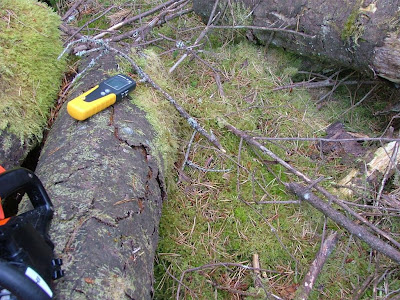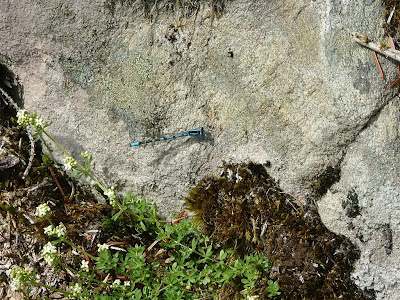Yes it has been a long time, far longer than I had thought it would be, but here we are, back on the blog as it were. Ever such a lot has been happening,and among other things we have managed to extend the scope and duration of the feasibility study. Our final report will now include a full costing of the price of woodchips andlogs literally from stump to radiator. Case studies on properties in Glenlyon will establish what it would actually cost a potential woodfuel user to install and use a log boiler or woodchip boiler Doing so will include obtaining full quotes for the costs of the systems and their installation alongside putting a cost on the supply of logs and chips from the forest to the user.

Many moons have passed since last I gibbered forth.
"We remain committed to the ambition of moving from 1% to 12% of all heat generated from a renewable source by 2020. This will require all aspects of society to play their part – householders, communities, public, commercial and industrial sectors."
Although details of quite how the scheme will run have yet to be announced it seems to me that we are certainly somewhat closer to realistic woodfuel heating in Glenlyon than we were prior to the announcement, which is good.

Clouds of doubt over the RHI start to clear- could blue skies be ahead?
"Could" is incidentally, probably one of the most accurate ways of describing the glen weather during autumn, recently its mostly been "could stop raining one day", prior to that it had been "could be another lovely day tomorrow" Ahh the untold joys of living with a diverse weather system.
Another of our case studies involves the supply of softwood as firewood, a subject often shrouded in doubt and disinformation for many, particularly it seems in Highland Perthshire where an ample supply of hardwoods has meant that burning softwoods has often been a poor second choice rather than a need. Hardwood timber, particularly for home owners without access to their own wood is however becoming scarcer and local suppliers are having to travel further to maintain supply or having to offer a one third mix of softwood/ hardwood.
One of the main finding of our study so far has been that " The most effective way to reduce oil use in Glenlyon would be to maintain a constant supply of inexpensive fuelwood to the residents of the glen".
Now that might sound a bit obvious, but behind the above sentence are various ramifications and learnings including that just because the most efficient and most sustainable way to heat with woodfuel is in a gassifying system fed with either chips or (best of all) 0.5m logs, that doesn't mean that someone burning open fires to heat rooms in a house is not also reducing their oil use.
As a woodfuel supplier we must also supply firewood size fuel for use in fires and stoves, at the moment however that firewood is going to be softwood, not hardwood. Many people will tell you that softwood is rubbish compared to hardwood however as Duncan Ireland from the Forestry Commission Technical Development Branch puts it " Its all the same stuff- cellulose, its just packed more densely in hardwoods".
The upshot of which is that good slowish grown hardwoods such as beech, ash and oak will, when properly dry, burn with more energy (= heat) than more rapidly grown softwoods. That's not to say the softwoods don't produce heat, they do, you just need more of it over the burn period and it needs to be properly dry.
Many of the worlds great wood heating nations rely almost entirely on coniferous softwoods for their heat and so will we in Glenlyon in our greener future.
Anyway we took some wood (soft) to a B&B in Glenlyon that is heated entirely by wood (hard) for them to try burning various ratios and combinations of wood in the range that supplies their domestic hot water and monitor the results on behalf of GWI.
Larch and Sitka leave Storebase 1 heading for Burnpoint X by way of Stack Island . At GWI we plan our experiments with military precision.
Commendable enthusiasm was shown about the experiment...note foot resting on Stack Island.
Should they find the softwood usable either on its own or as a supplement, then we will be one step further towards our goal of fuel self sufficiency and so will the B&B owners. There is softwood timber lying a few miles from their door in both directions and a supply chain could probably be enabled relatively easily.
















 J
J
 R
R
 S
S
 I
I


 T
T

 T
T

 A
A










 T
T



 A
A